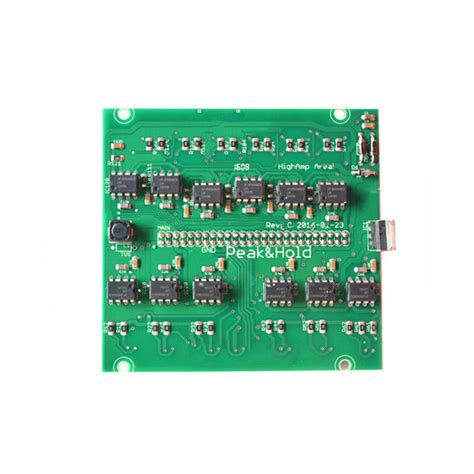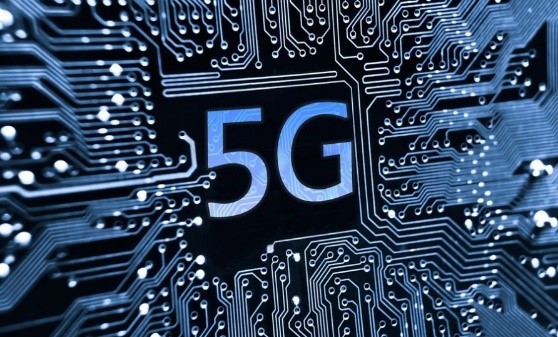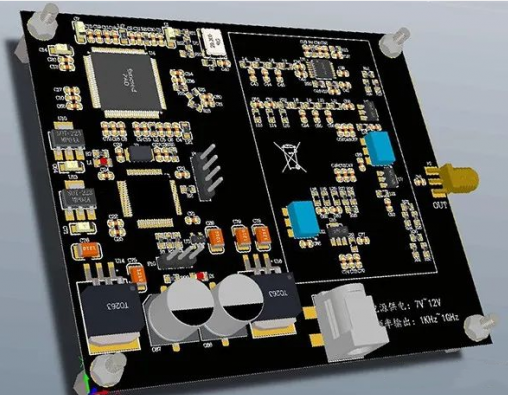Revolutionizing Electronics: Custom PCB Printing and Assembly Unleashed
Key Takeaways
The advancement of custom PCB printing and assembly has significantly reshaped the landscape of the electronics industry, allowing for greater efficiency and creativity. Different from traditional methods, PCB assembly techniques today leverage modern technologies that contribute to a more precise, faster, and cost-effective production pipeline. By employing sophisticated processes such as surface mount technology (SMT) and through-hole technology, manufacturers can produce intricate designs that were previously unattainable. The benefits of these innovations are numerous; for instance, the ability to create highly specialized configurations leads to enhanced performance and reduced footprint in electronic devices. Moreover, as businesses seek to differentiate their products in a competitive market, custom PCB assembly capabilities provide crucial support in product innovation. Real-world applications highlight this evolution; companies have successfully utilized pcba solutions to develop smarter consumer electronics, reliable automotive components, and advanced medical devices. This shift not only encourages creativity among designers but also elevates the entire manufacturing process by enabling rapid prototyping and reduced time-to-market for new products. Understanding these key takeaways is essential for anyone looking to navigate the evolving world of electronics design effectively.
The Evolution of PCB Technology: From Traditional to Custom Solutions
The journey of PCB technology has seen significant transformations over the years, evolving from standard, off-the-shelf solutions to an era of customization tailored to specific needs. Initially, traditional PCB assembly processes involved rigid layouts and predefined components, limiting designers in their ability to innovate. However, with advancements in technology and manufacturing techniques, the rise of custom PCB printing has provided an unprecedented level of flexibility. Designers can now create highly intricate and bespoke layouts that optimize space and enhance functionality.
Notably, this evolution has led to the emergence of advanced techniques such as laser etching, which allows for precise detailing at a micro level. Alongside this, the integration of more efficient assembly processes—often referred to as PCBA (Printed Circuit Board Assembly)—enables manufacturers to produce boards with enhanced reliability and performance. These innovations not only streamline production but also reduce costs in the long run.
The shift from traditional to custom solutions represents a fundamental change in how both products and systems are designed within industries ranging from consumer electronics to automotive applications. As designers explore new realms through these custom PCB designs, we see how such flexibility fosters creativity and accelerates time-to-market for cutting-edge technologies.
| Feature | Traditional PCB | Custom PCB Printing |
|---|---|---|
| Design Flexibility | Limited | High |
| Manufacturing Process | Standardized | Tailored |
| Cost Efficiency | High Mass Production Cost | Competitive with smaller quantities |
| Spatial Optimization | Rigid layouts | Dynamic component arrangement |
| Precision | Moderate | High precision with advanced techniques |
This table captures key distinctions that highlight the advantages of evolving towards custom solutions in the realm of PCB technology, ultimately reshaping the landscape for designers and manufacturers alike.
Understanding Custom PCB Printing: Techniques and Processes
The landscape of electronics manufacturing has been profoundly influenced by advances in custom PCB printing. This intricate process allows for the creation of unique printed circuit boards (PCBs) tailored to specific requirements, improving both functionality and performance. Among the various techniques employed, additive manufacturing stands out, where materials are layered to produce circuit patterns directly on substrates. This method not only facilitates complex designs but also reduces waste compared to traditional subtractive processes. Furthermore, the use of high-resolution printing technologies enables manufacturers to achieve finer details and denser circuits, which are essential in today’s compact electronic devices. In addition to printing, the assembly of PCBs, often termed PCB assembly (PCBA), employs techniques such as surface mount technology (SMT) and through-hole mounting for efficient component integration. Each technique brings its own set of advantages, allowing designers to capitalize on enhanced performance characteristics while optimizing costs. As a result, custom PCB printing is revolutionizing how electronic products are conceived and developed, paving the way for innovation across various industry sectors.
The Advantages of Custom PCB Assembly for Electronics Manufacturers
Custom PCB assembly offers numerous advantages that are reshaping the landscape for electronics manufacturers. With the rise of complex designs and high demands for efficiency, manufacturers are turning to personalized solutions that cater specifically to their unique needs. One of the primary benefits is the ability to optimize production costs through tailored processes. Traditional methods often involve limitations, whereas custom PCBA allows for adjustments that enhance resource allocation and minimize waste. Moreover, this approach permits rapid prototyping, significantly speeding up the development cycle and allowing for quicker iterations based on real-time feedback. In addition, custom assembly enables high levels of precision and quality control, which are critical in today’s competitive market where even minor defects can lead to substantial setbacks. Furthermore, incorporating advanced technologies such as automated assembly lines enhances operational efficiency and scalability, ultimately leading to improved profit margins. By implementing custom PCB assembly, electronics manufacturers not only gain a competitive edge but also foster innovation that meets modern consumer demands effectively.
Real-World Applications of Custom PCBs: Case Studies and Success Stories
Custom PCBs (Printed Circuit Boards) and PCB assembly have rapidly gained traction across diverse sectors, showcasing their significant impact on innovation and efficiency. One notable example can be found in the medical device industry, where the integration of customized PCBA (Printed Circuit Board Assembly) solutions has led to the development of more compact and reliable equipment. For instance, portable monitoring devices now use lightweight and efficient PCB assembly techniques, allowing for increased mobility and improved patient care.
In the realm of consumer electronics, companies are tapping into advanced custom PCB printing to enhance performance and create unique features. Take smart home devices as a case in point; they leverage sophisticated PCBA designs to enable seamless connectivity and user-friendly interfaces. Such innovations not only meet consumer demands but also foster sustainable manufacturing practices by minimizing waste.
Moreover, the automotive industry has seen the application of custom PCBs in electric vehicles, where intricate designs are essential for managing complex electronic systems. This customization allows manufacturers to integrate cutting-edge technologies like advanced driver-assistance systems while ensuring compliance with stringent safety standards.
The benefits extend beyond improved performance; custom PCB assembly methods provide manufacturers with flexibility in production, allowing for rapid prototyping and adaptation to market changes. Overall, these case studies highlight that custom PCBs are not merely components but pivotal elements that drive growth and innovation across industries. As technology advances, their role is poised to expand further, pushing the boundaries of what is possible in electronics design and production.
How Custom PCB Design Enhances Product Innovation
The advent of custom PCB design has become a cornerstone for product innovation in the electronics sector. By enabling tailored configurations, designers can address specific requirements directly, allowing for unique functionalities that off-the-shelf solutions simply cannot provide. PCB assembly techniques, particularly in the realm of pcba, have evolved to support this customization, streamlining processes that were once time-consuming and prone to error. For instance, incorporating advanced materials and innovative layout techniques can significantly reduce space, improve thermal management, and enhance electrical performance. Additionally, the flexibility offered by custom solutions facilitates rapid prototyping, enabling companies to bring ideas to market more swiftly than ever before. This agility not only fosters creativity but also enhances competitiveness in a fast-paced industry. As a result, businesses are not just creating products; they are crafting experiences tailored specifically to customer needs. Embracing custom PCB design empowers organizations to break traditional barriers and explore new horizons in product development.
Navigating Challenges in Custom PCB Production and Assembly
The journey of custom PCB printing and assembly is not without its obstacles. As designers and manufacturers venture into the realm of PCBA, they encounter various challenges that can impact efficiency, cost, and quality. One major hurdle is ensuring that the PCB assembly process aligns with the intricate designs and specifications required by advanced electronics. This often necessitates a deep understanding of different materials and technologies to avoid any performance issues. Moreover, achieving precision during assembly is paramount; even minor misalignments can lead to significant complications in the final product.
Another challenge lies in balancing production speed with quality assurance. Rapid prototyping is essential for meeting market demands, but it can sometimes compromise quality controls. A suggestion for overcoming this is implementing rigorous testing phases throughout the production process, ensuring that components function correctly before moving on to the next steps. Additionally, navigating supply chain complexities can pose difficulties, particularly when sourcing specific components for custom designs.
“Investing in relationships with reliable suppliers can streamline the supply chain and mitigate risks associated with PCBA.”
The integration of automation within custom PCB production offers a promising solution to these challenges by enhancing consistency and reducing human error. However, this transition demands a significant upfront investment in technology and training for personnel. Moreover, staying updated with rapidly evolving technologies remains crucial for maintaining competitive advantage in the ever-changing landscape of electronics.
By addressing these challenges proactively through innovative practices and strategic partnerships, companies can harness the full potential of custom PCB printing and assembly, paving the way for groundbreaking advancements in electronics design and manufacturing.
The Future of Electronics: Trends Shaping Custom PCB Development
As we look to the future of electronics, several trends are emerging that are significantly shaping custom PCB development. One of the most notable trends is the increasing demand for miniaturization and lightweight designs. As electronic devices become smaller and more portable, engineers are turning to advanced techniques in custom PCB printing to create compact and efficient solutions. This has led to innovations in multilayered designs that push the boundaries of traditional PCB assembly processes. Additionally, there is a growing emphasis on sustainability within the electronics industry, prompting manufacturers to adopt eco-friendly materials and practices in PCB assembly to reduce waste and enhance recyclability. Coupled with advancements in automation and smart manufacturing technologies, these trends are facilitating faster production times and reduced costs for PCBA, ultimately empowering designers to enhance product performance while meeting market demands. Furthermore, the integration of IoT technologies is leading to an increased need for more complex designs that incorporate connectivity features directly into custom PCBs. This evolution signifies not just a change in production techniques but a paradigm shift toward a more integrated approach in designing electronics that cater to user needs while driving innovation in the industry.
Conclusion
In summary, custom PCB printing and assembly have ushered in a transformative era for the electronics industry. By leveraging advanced techniques such as additive manufacturing and precise design-for-manufacturability practices, manufacturers can create highly efficient and tailored circuit boards that meet specific project demands. Additionally, the benefits of streamlined PCB assembly, including reduced production times and lower costs, have made these processes increasingly appealing for businesses aiming to enhance their product offerings. Real-world applications testify to the impact of these innovations, from sophisticated consumer electronics to critical medical devices. As industries continue to embrace customization, it is clear that the future of electronics will be shaped by the capabilities afforded by pcba processes, leading to greater product innovation and a competitive edge in the market. The ongoing evolution of PCB technologies promises exciting prospects for both designers and manufacturers alike, reinforcing the imperative of adapting to these changes in order to thrive in a rapidly advancing landscape.
FAQs
What is custom PCB printing?
Custom PCB printing refers to the process of creating printed circuit boards tailored to specific design requirements. This includes unique layouts, materials, and specifications that match the desired functionality of electronic components, ensuring optimal performance in various applications.
What does PCB assembly involve?
PCB assembly (often abbreviated as PCBA) involves soldering electronic components onto the printed circuit boards. This process can include both surface mount and through-hole technology, depending on the design and requirements of the final product.
What advantages does custom PCB assembly provide?
Custom PCB assembly allows for greater flexibility in design and production. By utilizing tailored solutions, manufacturers can optimize production efficiency, reduce costs, and enhance product quality. Custom assemblies also allow for more innovative designs that can meet specific market demands.
How does custom PCB design enhance product innovation?
Through innovative designs in PCB assembly, manufacturers can introduce features that differentiate their products in a competitive market. Custom PCBs facilitate more advanced functionalities, optimize size and weight, and enhance power efficiency—key factors in engaging consumers.
What are some real-world applications of custom PCBs?
Custom PCBs have a vast array of applications across multiple industries including telecommunications, automotive electronics, medical devices, and consumer products. These applications showcase the versatility of custom designs in solving complex electronic challenges.
What challenges might arise during custom PCB production?
Challenges in producing custom PCBs often include managing design complexities, ensuring quality control throughout fabrication processes, and keeping up with rapid technological advancements. Addressing these issues requires expertise and careful planning to ensure successful outcomes.







